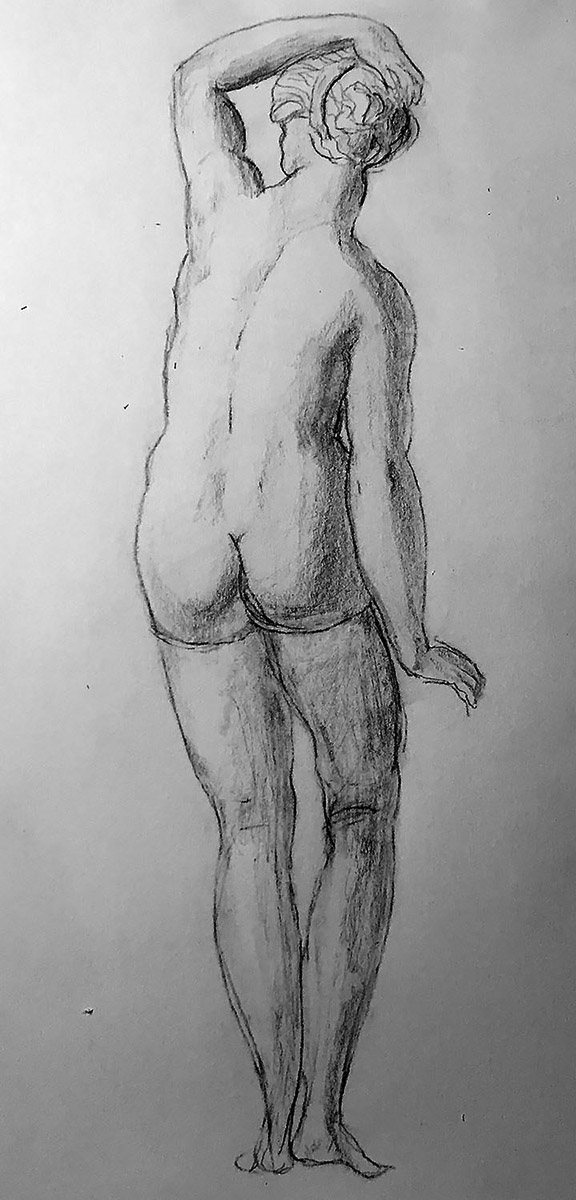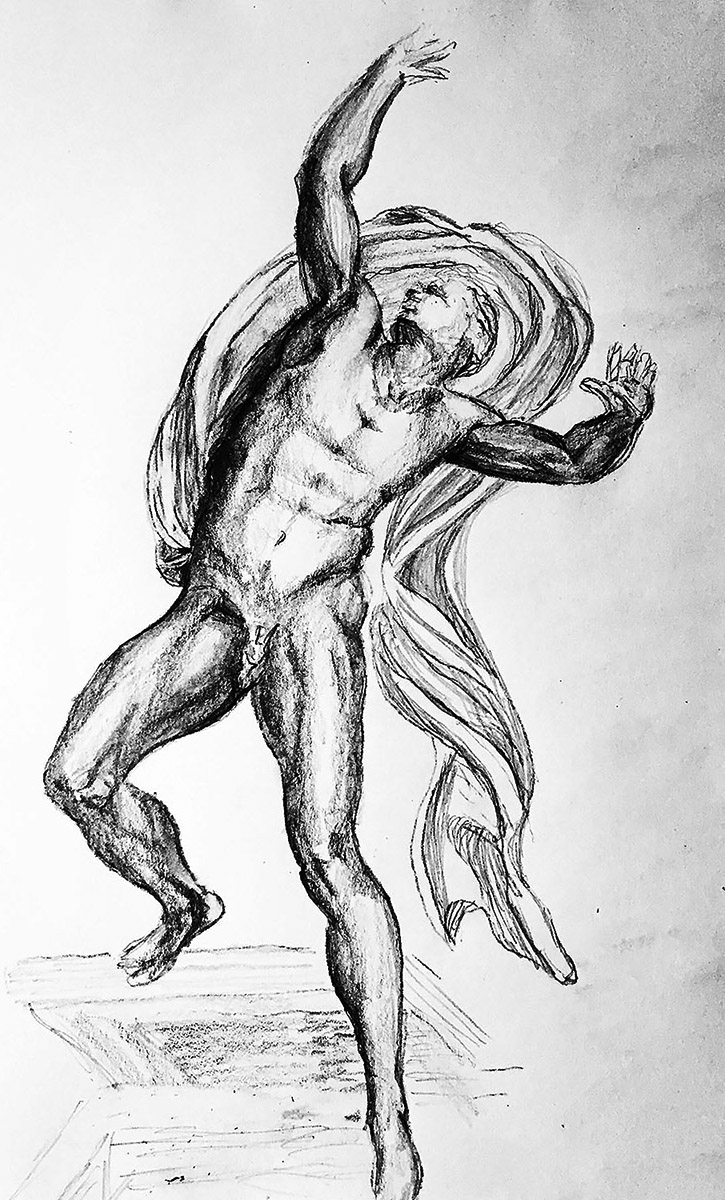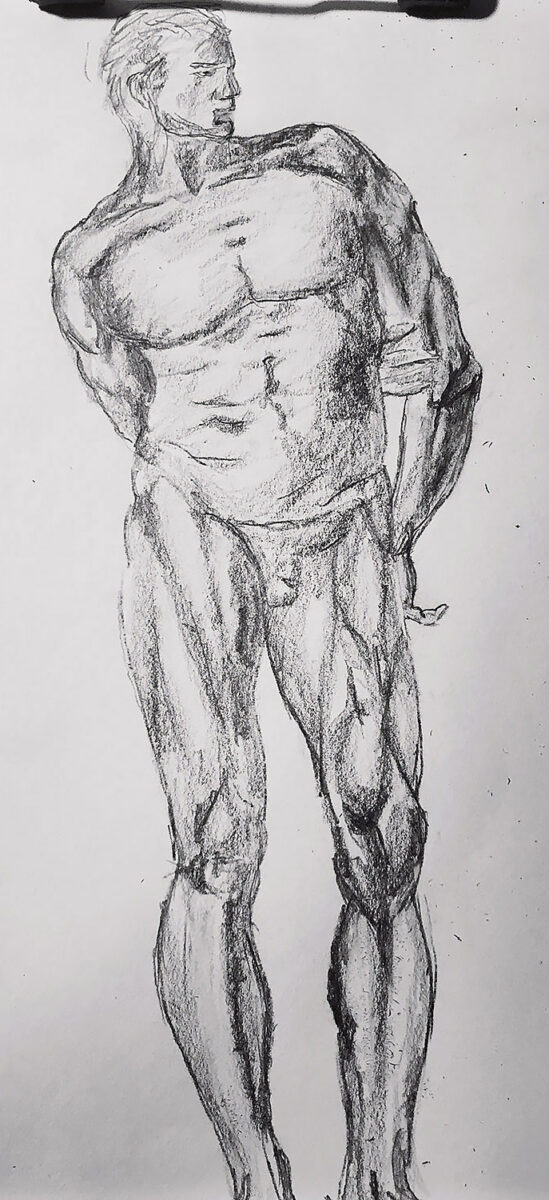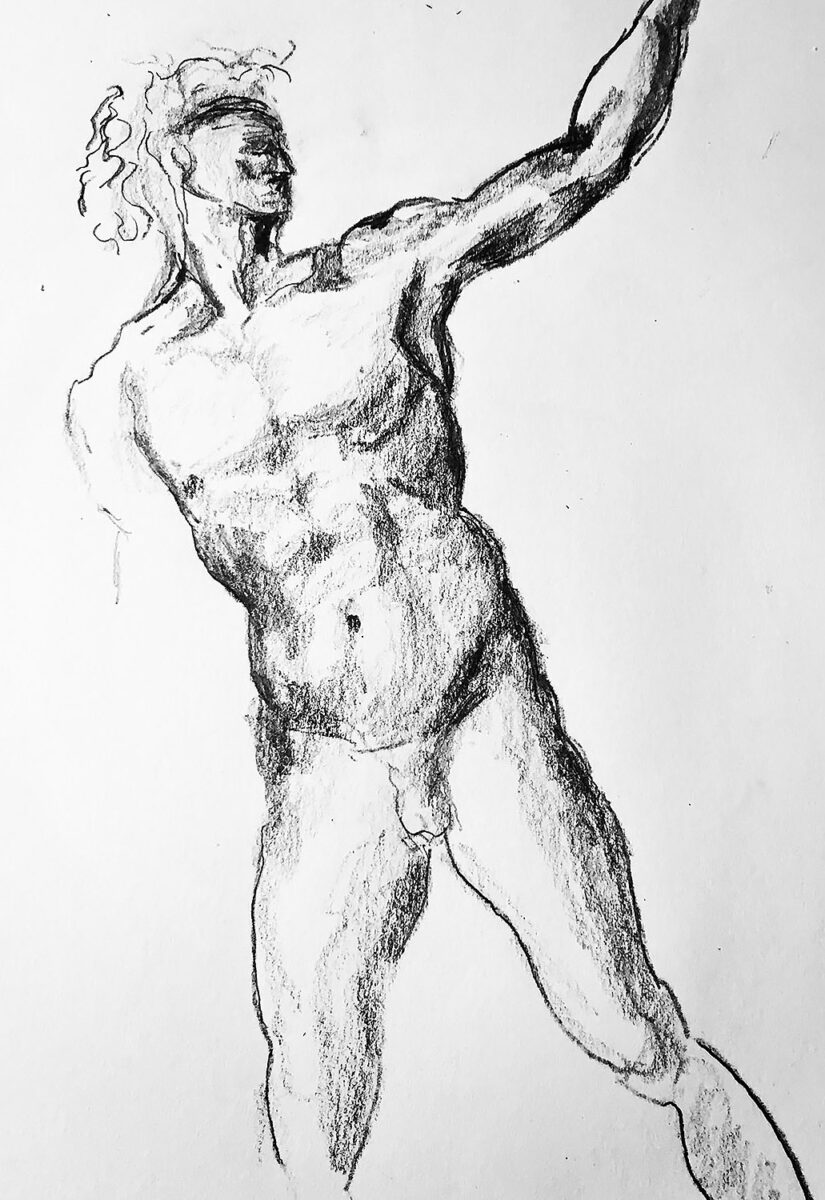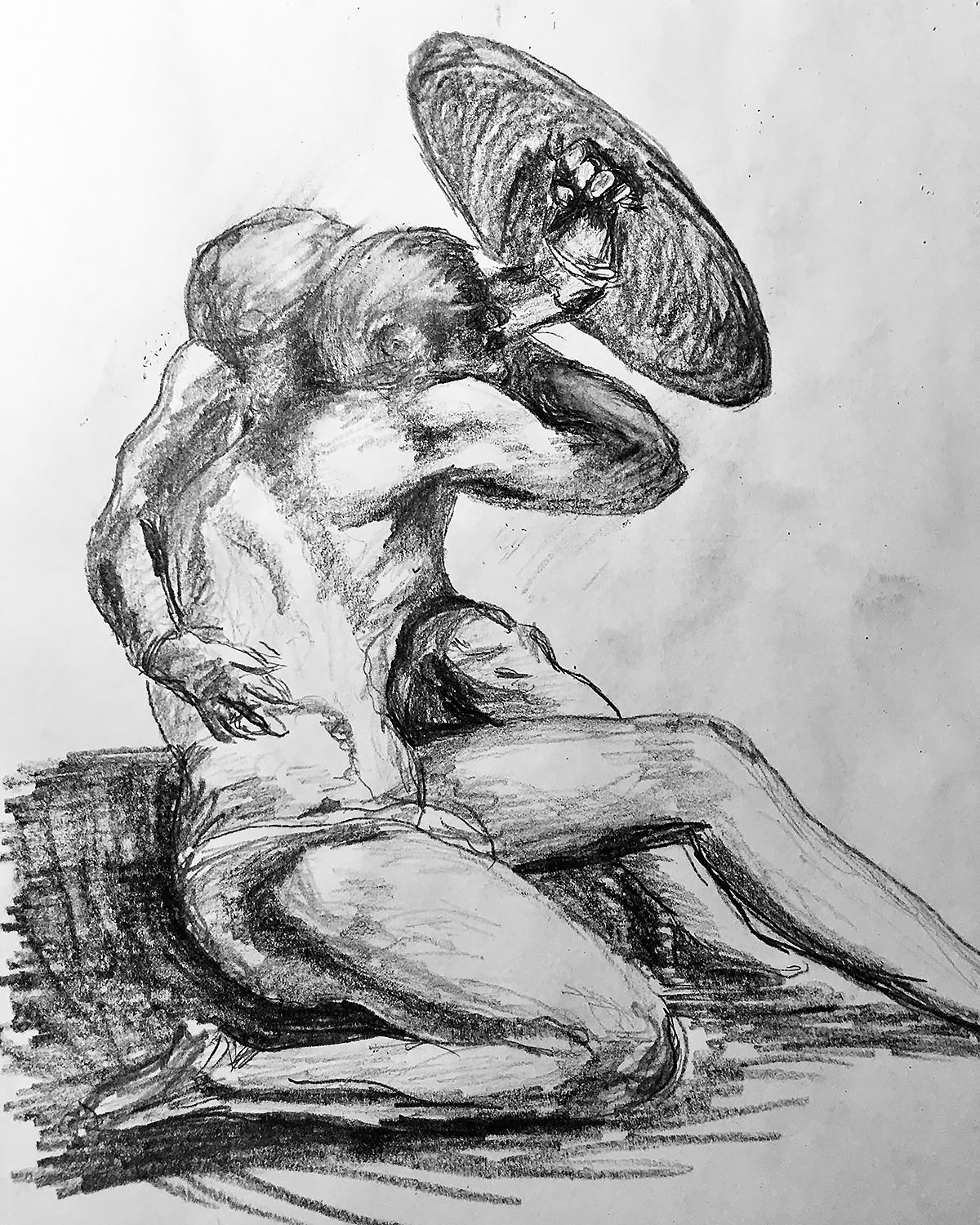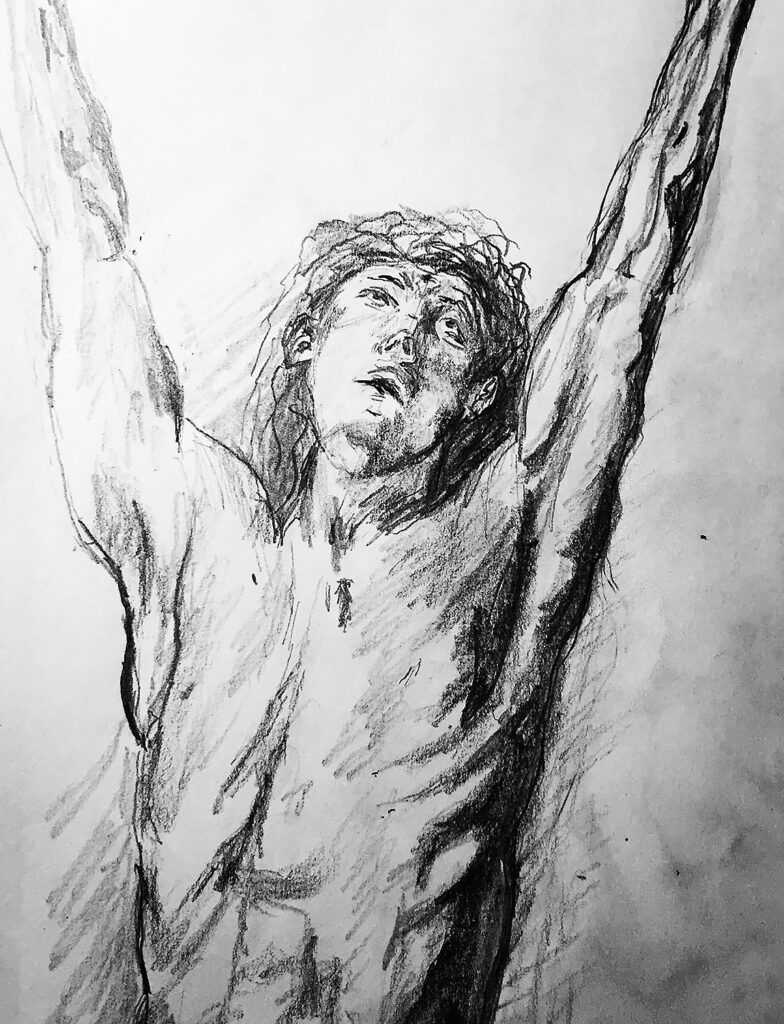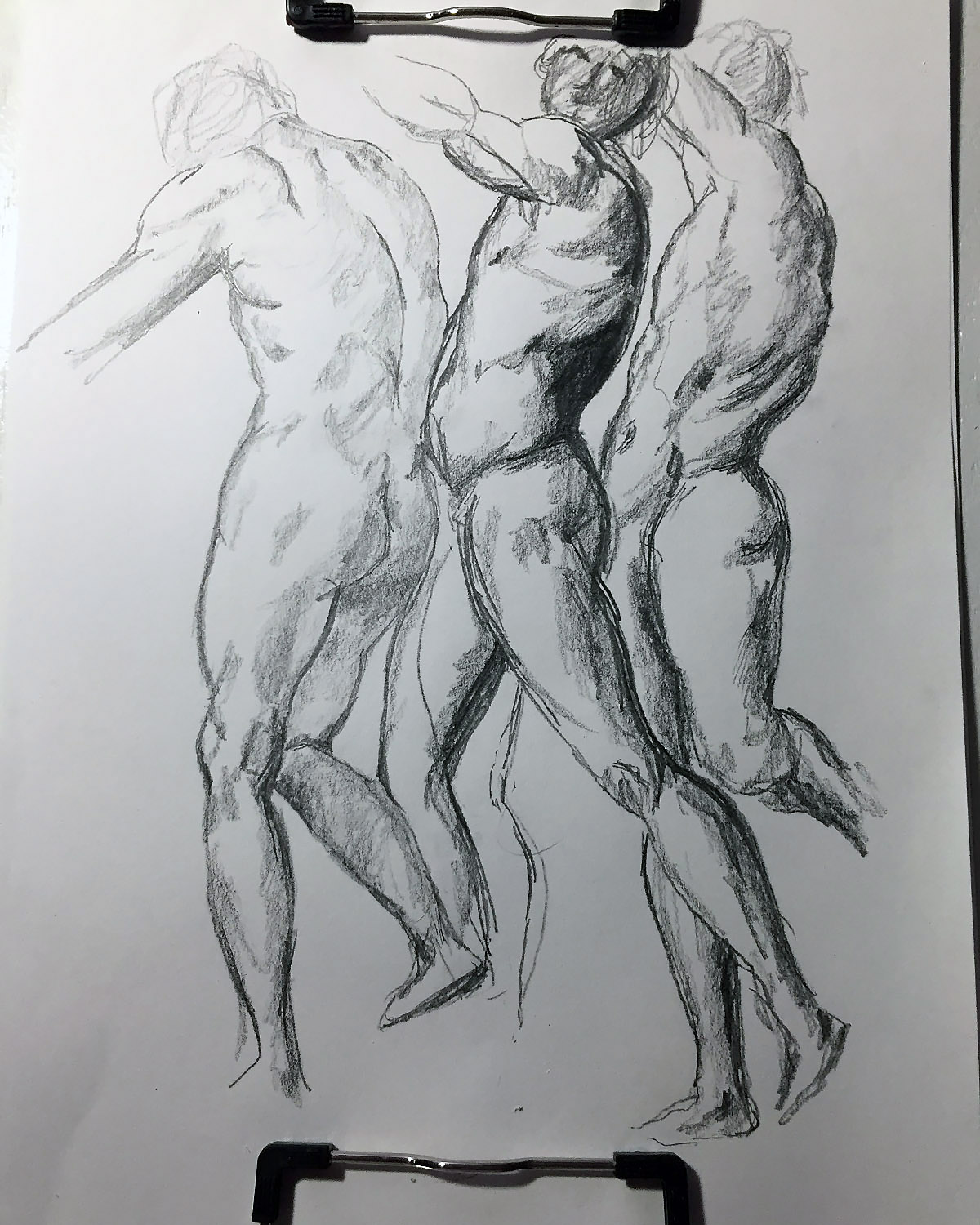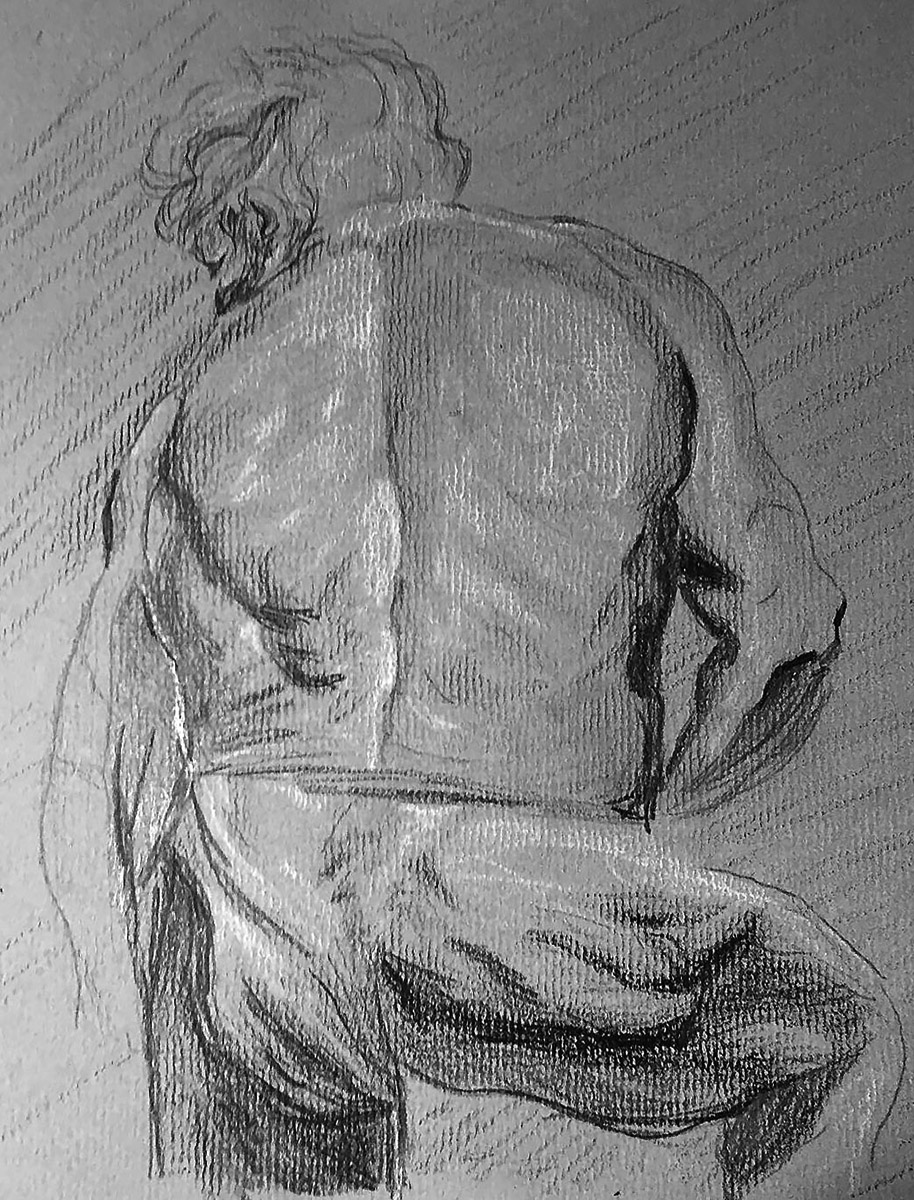
The drawing above was done in black and white prismacolor pencils on textured gray paper. The original work was done in white and black chalk on buff paper. According my large book of old master drawings that I’m working from, the work is by Rubens. However, it turns out to be by another artist by the name of Arnout Vinckenborch. The Fitzwilliam Museum in Cambridge, which houses the drawing, has re-attributed the work to be by Vinckenborch. Interestingly, the word draftsman is in parenthesis next to his name instead of referring him as an artist. The value and significance of an artwork is diminished when it is attributed to a lesser known artist. This begs the question of what is more important, the work itself or the person who created it. Websites that sell reproductions of the drawing are still attributing the original work to Peter Paul Rubens. Most likely they don’t know that the attribution has changed or perhaps there is something more sinister going on.
“Let’s learn a little about Arnout Vinckenborch.”
Let’s learn a little about Arnout Vinckenborch. It will have to be a little because there is not much information about him. He was born in Alkmaar, around 1590. Alkmaar is small town in Northern Holland known for it’s cheese market. I only mention this because I like cheese. Don’t forget, this is my blog so I can make it about myself at anytime I choose to do so. Getting back to Vinckenborch, he grew up in Amsterdam before moving to Antwerp. Vinckenborch worked in the studio of Rubens. His development as an artist and painting technique was of course greatly influenced by the great master. So a lot of his output is mixed in with Rubens and other fellow artists in work that came out of the studio. He did however produce some works of his own before his untimely death at the age of 30.
Click this link to see and/or buy a copy of the drawing of a man’s back by Vinckenborch.

